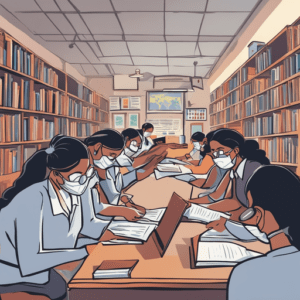The Future of Internationalization: Post-Pandemic Prospects for Indian Higher Education
Introduction
The COVID-19 pandemic has disrupted higher education worldwide, bringing about unprecedented challenges and forcing institutions to adapt rapidly. As Indian higher education grapples with the consequences of the pandemic, it also stands at a crossroads, reevaluating its internationalization efforts. This article explores the post-pandemic prospects for Indian higher education in terms of internationalization, examining key trends, challenges, and opportunities.
The Impact of COVID-19
The COVID-19 pandemic has significantly impacted internationalization efforts in Indian higher education:
- Disruption of Mobility: Travel restrictions and lockdowns hindered the physical mobility of international students, limiting their ability to study in India.
- Digital Transformation: The pandemic accelerated the adoption of online learning, opening up opportunities for global engagement through virtual platforms.
- Economic Challenges: Economic uncertainties have affected the ability of Indian students to pursue education abroad, leading some to explore domestic options.
Trends Shaping the Future
- Hybrid and Online Learning: Post-pandemic, Indian institutions are likely to continue offering hybrid and online learning options, enabling international students to access education remotely while promoting global engagement.
- Transnational Education: Indian universities may explore partnerships with foreign institutions to offer joint or dual-degree programs, providing a globalized education experience.
- Quality Enhancement: To attract and retain international students, Indian universities must focus on improving the quality of education, research facilities, and student services.
Challenges to Overcome
- Perceived Quality: Indian higher education faces challenges in changing international students’ perceptions regarding the quality and competitiveness of its programs.
- Regulatory Hurdles: Stringent regulations and complex bureaucratic procedures can deter international students and hinder collaboration with foreign institutions.
- Infrastructure and Resources: Many Indian institutions must invest in modern infrastructure, technology, and faculty development to meet international standards.
Opportunities for Growth
- Diverse Student Body: India’s cultural diversity and rich heritage can attract international students seeking unique academic and cultural experiences.
- Research Collaboration: Collaborative research projects can be a strong draw for international students, contributing to India’s research output.
- Government Initiatives: Government policies that facilitate internationalization, such as the “Study in India” program, can support international student enrollment growth.
Cultural Exchange and Soft Power
- Diplomatic Relations: Hosting international students fosters diplomatic relations, strengthening ties between India and their home countries.
- Soft Power: India can enhance its soft power through cultural diplomacy, creating a positive global image through international student exchanges and academic collaborations.
Concluding Observations
The post-pandemic era offers challenges and opportunities for Indian higher education’s internationalization efforts. By embracing digital transformation, enhancing quality, addressing regulatory hurdles, and leveraging its cultural diversity, India has the potential to become a significant global education destination.




